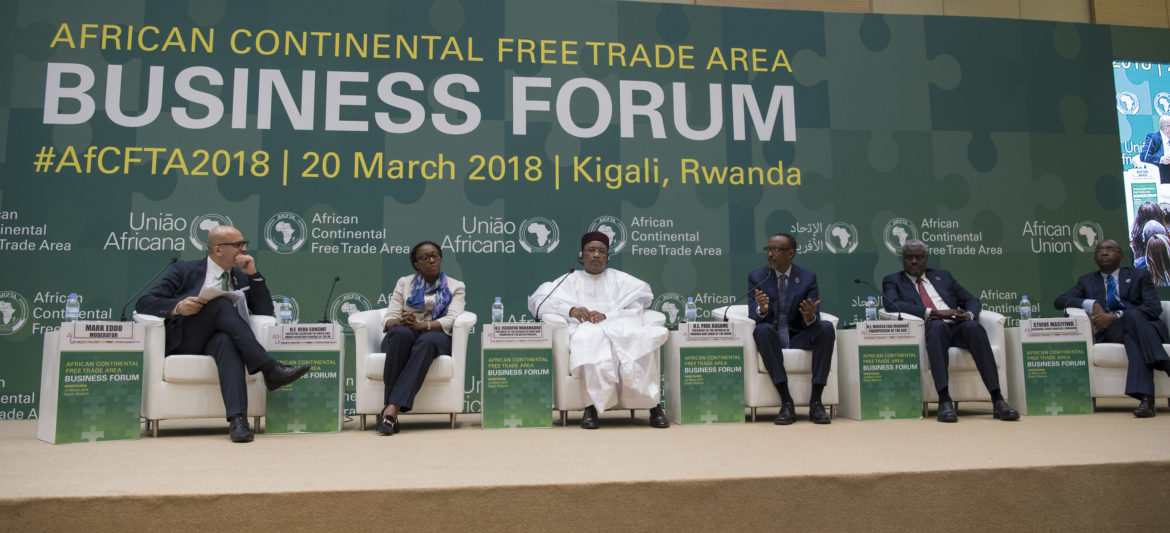In 2018, representatives from dozens of African countries signed onto the Kigali Declaration, agreeing to a framework for future negotiations on a continent-wide free trade agreement. By 2021, a broad framework of the agreement had finally been formulated and trade began the same year– the African Continental Free Trade Agreement (AfCFTA) was now in force. Now a year into the effective implementation of only some of the key aspects of the deal, the future remains turbulent and uncertain for a complete and harmonious application of the deal’s core principles and general spirit.
One of the key aspects of the economic landscape of trade in Africa that the AfCFTA is trying to rectify is the low level of intra-African trade. According to the United Nations Conference on Trade and Development (UNCTAD), intra-African exports stand at only 16.6% percent of total African exports, a very low figure compared to 68.1% for Europe, 59.4% for Asia, and 55% for America. Due to the trade liberalization arising from their regional trade agreements, like the North American Free Trade Agreement (NAFTA), made up of the US, Canada, and Mexico, and the European Union’s free trade policies for its member states, these latter regions have seen an explosion in intra-regional trade. Africa lacks this kind of unified trade bloc, which explains this low figure, but the AfCFTA would help increase it. However, this has been easier said than done.
According to African development scholar Teniola Tayo, the leaders of countries who have signed onto the deal have spoken widely about the benefits of the AfCFTA without realizing the amount of effort they will have to go through to actually implement the core aspects of the deal: “It’s not magic. There are a whole lot of things in the middle that need to get done. It needs continued commitment from everybody.” She also stresses that the deal must be implemented in a fashion that leads to material benefits for average Africans, not just the “industrial elites.”
In the run-up to the implementation of the deal, there was immediate resistance to the deal. Some economically significant countries like Nigeria and Uganda failed to participate fully in the first sets of negotiations, claiming that they wanted to ensure their own national interests came first. Nigeria ultimately signed onto the deal, as did Uganda, but this demonstrated the immediate resistance that came about even before a framework was agreed upon.
Now over a year into the implementation of the deal, progress has been slow. However, the deal has been purposefully designed in this way to allow countries to ease into their obligations. Most countries have 5 years to implement the tariff reductions, while the least-developed countries (LDCs) have 10 years. In a positive sign for the deal, a major contention between signatories on ‘‘rules of origin’ is almost complete. Nevertheless, the two other key phases of negotiation on intellectual property and e-commerce have yet to begin, making the deal simply about tariff reduction policy thus far.
One example of the stumbling blocks AfCFTA member states have gone through is the case of the border between Nigeria and Benin. Back in 2021, Benin closed its land border to cargo crossing in from Nigeria if they refused to pay tariffs on their goods, in an apparent retaliation against Nigeria’s own border restriction policy in 2019-2020 in its attempt to curb rice imports. Though the policy was rescinded and the cargo trucks were eventually allowed to pass, the action violated the AfCFTA, demonstrating that the deal could be vulnerable to these kinds of inter-African disputes.
African leaders, business figures, and civil society members at the World Economic Forum highlighted the need to act on key issues to facilitate the flow of goods and services which trade liberalization through tariff reduction alone would struggle to achieve. They mention three key issues: Reducing infrastructure logjams and bureaucracy, harmonizing regulations, and avoiding protectionism.
First, the speakers noted the chronic lack of suitable infrastructure to transport goods and services across African borders. Furthermore, the presence of exorbitant levels of ‘red tape’ through “customs stamps, signatures, and certificates” serves as a significant barrier to trade. To them, rectifying this is key to implementing the spirit of the AfCFTA.
Second, the speakers called for the harmonization of trade rules between countries. They stressed on standardization of regulations, common rules, and “harmonious regulations.” One representative from the African Union stated that their agenda will be to implement an “aggressive program of trade facilitation, so that [they] minimize the key number of documents” needed during trade.
Finally, the speakers argued that avoiding protectionism will be key to uphold the AfCFTA. This last issue, as exemplified by the Nigeria-Benin dispute, will determine the future of the deal.
The AfCFTA has been in effect (in part) for over a year, but there remains significant work to be done to implement its core principles. Though it holds the potential to transform the economic and social landscape of the continent, African leaders face significant hurdles in seeing the deal through.
Edited by Jayati Sareen

William Gilbert is in his fourth year at McGill University, pursuing a B.A. Joint Honors in Political Science and International Development. He is a staff writer for Catalyst. He is particularly interested in structural transformation for economic development in Sub-Saharan Africa.


One thought on “Africa’s New Trade Agreement: One Year On”